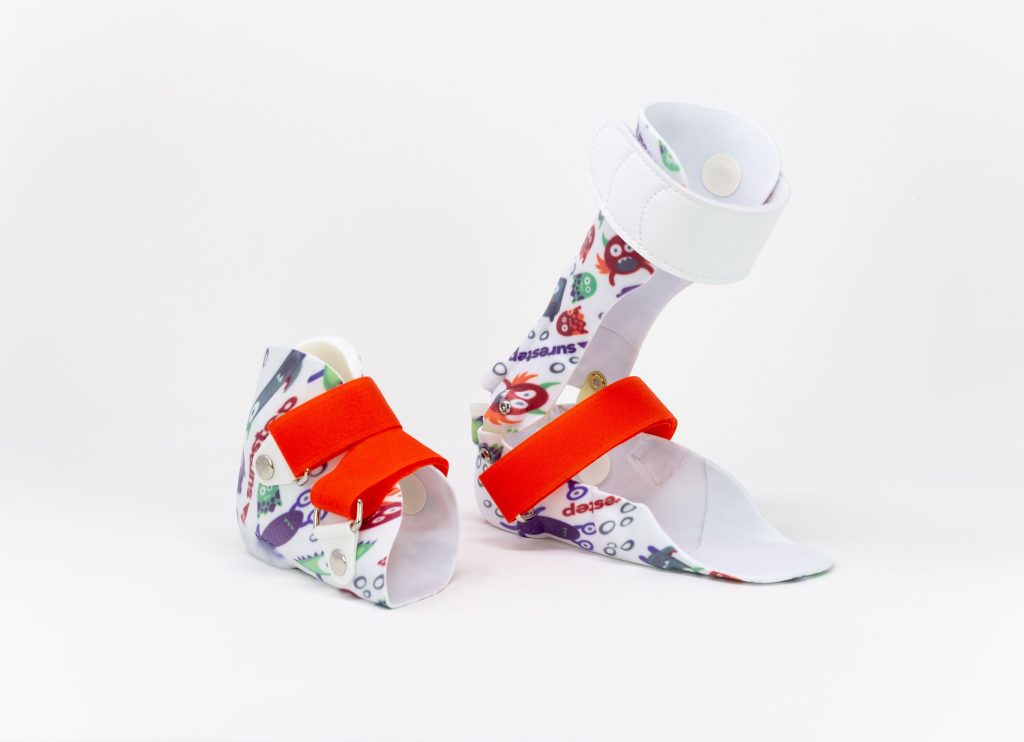27
Sep
2022
Building the Best Indy 2 Stage Wear Schedule

The Indy 2 Stage works for a wide variety of children in a range of situations:
- Very young children who are still working on transitional skills, such as moving from crawling to walking
- School-age kiddos who walk all morning and need support when they fatigue
- Many others
It’s fully customizable! Your orthotist can use different combinations of SMO and AFO to help your particular child.
Dosage and Scheduling Is Important
Dosage is very important with the Indy 2 Stage.
What is dosage? It’s a custom plan for your child—the amount he or she will wear the braces throughout each day.
Don’t worry! Your healthcare team—think of your orthotist, PT, and/or pediatrician—will build a dosage schedule specifically for your kiddo to get the best outcomes from the Indy 2 Stage.
A dosage schedule is especially important with the Indy 2 Stage, because this unique brace has two parts. It can easily transition between an SMO and an AFO, allowing usage to be flexible and cater to specific activities throughout a typical day.
Here are three examples. Skim through any that interest you!
1. Tiptoe Tammy
Tammy has extremely low muscle tone, sensory issues, and a tip toe walking habit. Her orthotist wants her to practice crawling correctly and sitting in a variety of positions.
Tammy also needs more sensory input in her feet while climbing stairs, which will help her learn postural stability.
Here’s her recommended dosage:
- SMOs: Wear for most of the day.
- AFOs: Her parents add the AFO during gait training sessions when she practices walking, either holding hands with a parent or using a gait trainer.
As she gets better at walking in her gait trainer, she will wear her AFOs for longer periods. Over the course of one year, her trunk control should improve so much that she graduates out of the AFOs, only needing her SMOs in the gait trainer.
Takeaway: By having both SMOs and AFOs, the team is able to try different combinations and adjust the wear schedule to fit Tammy’s skill development.
2. Fatigued Fee
Fatigued Fee loves to play throughout the day at school and go on long walks with her family on the weekends.
However, as Fee gets tired later in the day, her gait starts to change, and she tends to trip over her feet, causing stress and fatigue. An Indy 2 Stage with the dorsiflexion assist hinge will prevent her tripping.
Here’s her recommended dosage:
- SMOs: In the morning, when her muscles are most ready, start her wearing just SMOs. This lets her use her muscles more and get more skills practice.
- AFOs: In the afternoon, as she starts to fatigue later, add the AFO to give her more stability and energy.
Takeaway: This schedule decreases trips and falls and helps Fee maintain her energy throughout the day. Energy and focus help her concentrate on school, learn skills, and make friends.
3. Speedy Sam
Speedy Sam is almost the opposite of Fee: He needs to wear the full Indy 2 Stage—SMO plus AFO—while at school. But at the end of the day, he really wants to remove both types of braces while playing at home and has argued with his mom about it.
However, if he were to spend time at home wearing no braces, he would move and bear weight with poor alignment. He’d overstretch his mid-foot and miss out on activating his core.
Here’s his recommended dosage:
- AFOs + SMOs: Wear the full Indy 2 Stage at school.
- SMOs: His mom “lets” him wear only SMOs paired with shoes when he gets home from school. This makes him feel like he’s getting a great deal and stops their arguments.
Takeaway: The option to take AFOs off helps Speedy Sam to participate and use braces more, getting the best results. Playing in just SMOs still protects Sam’s feet, improves alignment, gives him more energy at the end of a long day, and activates his trunk muscles.
Find the Right Schedule With Your Team
This might sound like some complicated stuff, but your orthotist, PT, and other team members will help you find the best dosage for your kiddo.
Remember, SMOs give stability and alignment to each foot while your child is in motion, during various weight-bearing activities.
Adding an AFO in an Indy 2 Stage gives additional stability, helping your child develop muscles and movement patterns he or she will have for life.
Are you interested in the Indy 2 Stage? Let us help you find an orthotist near you—click here.
See more benefits of the Indy 2 Stage.
